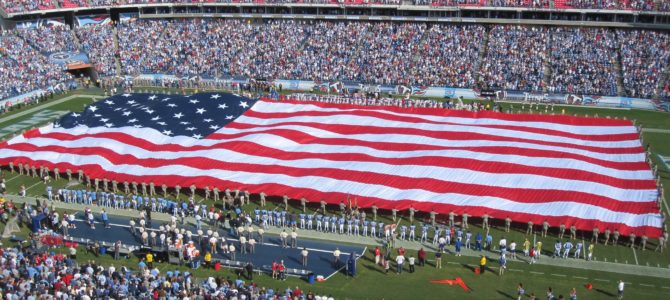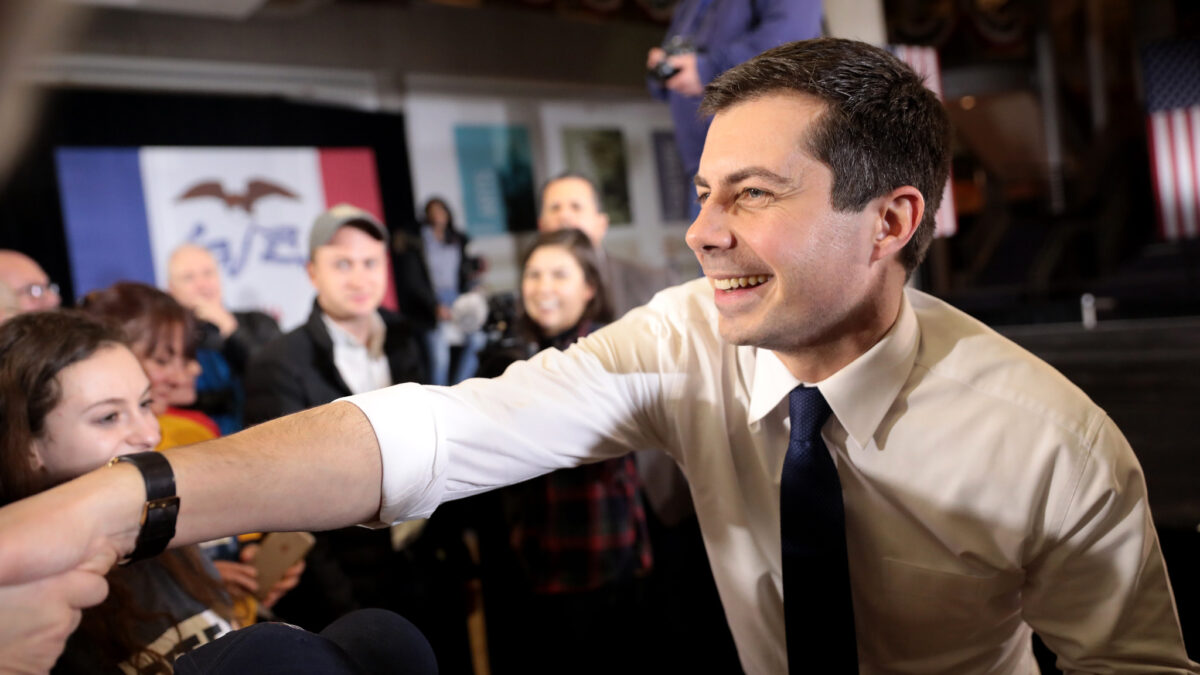
Unlike the New York Times staffer who told MSNBC it was “disturbing” to see dozens of American flags flying last weekend, I loved seeing so many storefronts and houses decked out in flags and red, white, and blue bunting over Memorial Day. All year, I’ve noticed more flags than usual and wondered how many were silent acts of defiant patriotism in the face of so much homegrown anti-American animosity.
On this Flag Day, the 244th anniversary of the Continental Congress’s adoption of the Stars and Stripes, it’s worth taking a moment to reflect on both the well-cherished and little-known history of Old Glory.
Before the Stars and Stripes, American naval forces and George Washington’s Continental Army flew the “Continental Colors,” which displayed the British flag in the top left corner instead of the familiar constellation of stars on a blue background. Also known as the “Grand Union Flag,” its first recorded use was in December 1775 by naval officer John Paul Jones.
Jones would later be renowned for responding “I have not yet begun to fight!” to a query from the British ship Serapis asking him to surrender his heavily damaged ship after a naval battle, and capturing the Serapis and her escort the Countess of Scarborough three hours after his iconic quip.
The Continental Colors closely resembled the flag of the British East India Company, which also displayed red and white stripes with the British flag in the upper left corner. After British troops allegedly mistook it for a flag of surrender, the Continental Congress passed a resolution “That the flag of the United States shall be of thirteen stripes of alternate red and white, with a union of thirteen stars of white in a blue field, representing the new constellation.”
While legend credits Betsy Ross with the creation and design of the Stars and Stripes — based on claims by her grandson in 1870 — all historians have verified is that Ross was a seamstress who sewed flags for the young American military. According to lore, George Washington, who was a customer at Ross’ upholstery shop, consulted her on the new flag’s design, and she convinced him to change the stars from six points to five for easier sewing.
The flag may have actually been conceived by signer of the Declaration of Independence Francis Hopkinson, as letters he sent to Congress about his designs suggest. After Hopkinson initially asked for payment in the form of “a quarter cask of the public wine,” Congress responded to his requests by recognizing his involvement but declining to pay since others had helped him.
Hopkinson is thought to have designed both a general and a naval version of the flag, with more white stripes on the former and more red stripes on the latter for better visibility at sea. No further directives initially mandated the arrangement of the stars, however, and multiple versions developed.
It’s speculated this new style was flown for the first time in August 1777, when soldiers at Fort Stanwix — famed as the only American fort to never surrender to the British during the entirety of the War for Independence — assembled a flag out of their coat fabric. In response to British demands to surrender, the besieged Americans’ response was recorded by a young officer. “Early this Morning,” he wrote, “a Continental Flag made by the Officers of Col. Gansevoort’s Regiment was hoisted and a Cannon Levelled at the Enemies Camp was fired on the Occasion.”
While it’s not definitive which version of the flag exactly was sewn, Lt. Col. Marinus Willett — Fort Stanwix’s second in command — recalled:
The Fort had never been supplied with a Flagg – The importance of having one on the arrival of the Enemy had set our Ingenuity to work; and a respectable one was formed the white stripes were cut…the blue strips out of a Cloak…The red stripes out of different pieces of stuff collected from sundry persons. The Flagg was sufficiently large and a general Exhilaration of spirits appeared on beholding it Wave the morning after the arrival of the enemy.
The first time the Stars and Stripes led troops into battle was at the Battle of Brandywine in September 1777. In February of the next year it was recognized by international ships for the first time. Around the same time, American forces overtook a British fort in the Bahamas, marking the first time the flag flew on foreign soil.
Of course, one of the most famous American flags is the one that proudly flew over Fort McHenry to show victory against the British assault on Baltimore in the War of 1812. This star-spangled banner inspired Francis Scott Key to write a poem that would become our national anthem more than a century later in 1931.
The flag was 30 by 42 feet, and for years people cut fragments out of it as souvenirs of the historic moment, leaving the flag about 80 percent intact by the 1880s. In 1818, the widow of an American soldier who fought at the battle was granted a piece of the flag to bury with her husband.
The observance of “Flag Day” didn’t come until much later, however. Schools held their own “flag days” to encourage patriotism among immigrant children during the nineteenth century’s immigration surge. Wisconsin teacher Bernard J. Cigrand organized what is considered the first annual Flag Day recognition. A similar initiative by New York kindergarten principal George Balch led the New York State Department of Education to formally observe the holiday.
President Woodrow Wilson in 1916 and President Calvin Coolidge in 1927 proclaimed June 14 Flag Day, and Congress codified the observance in 1949. In 1958, with the addition of the state of Alaska to the union, a 49th star had to be incorporated. In response to a history assignment, 17-year-old Ohio student Bob Heft decided to design a 50-star American flag, representing not only Alaska but also Hawaii, which he expected would soon become a state.
Cutting up a flag from his grandmother and reassembling it with two dollars’ worth of blue cloth, Heft designed a 50-star flag and received a B-minus grade. After his teacher jokingly promised to change the grade if Congress adopted his flag, Heft biked to his congressman’s office to pitch the design. The flag was officially adopted on July 4, 1960, and Heft’s teacher kept his promise to change his grade to an A.
Today, you’ll find that flag waving in front of offices, restaurants, government buildings, and homes around the country. It hangs from the tops of construction cranes and front porches, and from the backs of pickup trucks and boats. If you aren’t displaying one, you should be. It represents a hopeful, innovative people who take pride in their vision of the opportunities and victories true liberty can accomplish.









